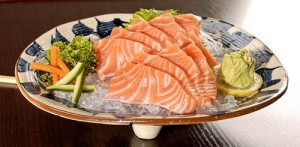Phytochemicals, or second metabolites, are the substances that produced by plants and serves in variety of functions including the defense against attack by insects or other herbivores, fungi and bacteria. In the human evolution and process of adaptation to the continuously changing environment, we took a lot of advantage of phytochemicals and the most frequently used ones are spices in the food preparation and meals, and spices indeed reduce the jeopardy of some food-borne pathogens, like Samonella. Clostridium and Vibrio, to a great extent.
The most commonly used spices include garlic, chili, cinnamon and basil. Not only adding up flavors to the meals, the wholesome health effects of spices also worth to talk. Spices have inhibitive influences on microorganisms—it would be the bacteria for our most concern, and what really act in the inhibition of spices are phytochemicals. Spices contribute the most to the inhibition of bacteria is in our particular interest since bacteria intrigue more food borne diseases than fungi and other microorganisms do. Take the functioning phytochemical inside garlic as example, ascorbic acid has notably antioxidant and anti-carcinogenic ability that can act positively to our body in a direct way besides its antimicrobial potential that acts on the bacteria in meals as we discuss here.
The spice use can be greatly distinctive in their texture, their quantity and in their types. Spices primarily exist in to forms in the market, day and fresh. Most spices are in powder texture since dried spices are more convenient than the fresh ones for the most time and day spices are more chef-favored due to their readiness in control and the nice-looking plating; the converting process from fresh to dry is not very easy and for North America, about three portions of fresh herb is made into one portion of dried herb. Notably that both dry and fresh spice serves the approximately equivalent antimicrobial functions and fresh spices dried under relatively lower temperature have better conservation of nutritional substances and antimicrobial phytochemicals.
The spice use is also dose-dependent. Solid evidence exists to indicate that the more concentrated spices in the meal, the slower the meal deteriorates—more bacteria are inhibited by higher concentrated-spice meal. The reason why this works is primarily because of the amount of antibacterial phytochemicals present in the meal: more concentrated means more phytochemicals would appear in the meals.
The use of spices shows geographical idiosyncrasies. Most people have had experience with this novel experience with their taste bud during travel. Japanese dishes are delicate and more nutritional, Indonesian and Szechwan dishes hot and middle European and Scandinavian dishes bland. Even within the same country, the spices use can be distinctive due to the environmental discrepancy. Take China as example, dished in northern China are always spicy and greasy most because hot spice and make them feel hot and more oil can be stored in their body to defense the cold, while people in southern China more favor in light taste food.
The differentiated use of spice prominently highlights the role of spice in Darwinian perspective. Spice is important for human in evolutionary sense: spices serves as replacement to antibiotics and the overuse of medication, which becomes a more effective and healthy way to combat microbes. Moreover, environmental and cultural distinctiveness lead to sundry uses of spices—human can better fit in the changing environment with different spices just like the northern and southern Chinese do. Be gratitude to every single aspect of our life cause almost everything emerge around us can make us better and enjoy your meal with spices!
















